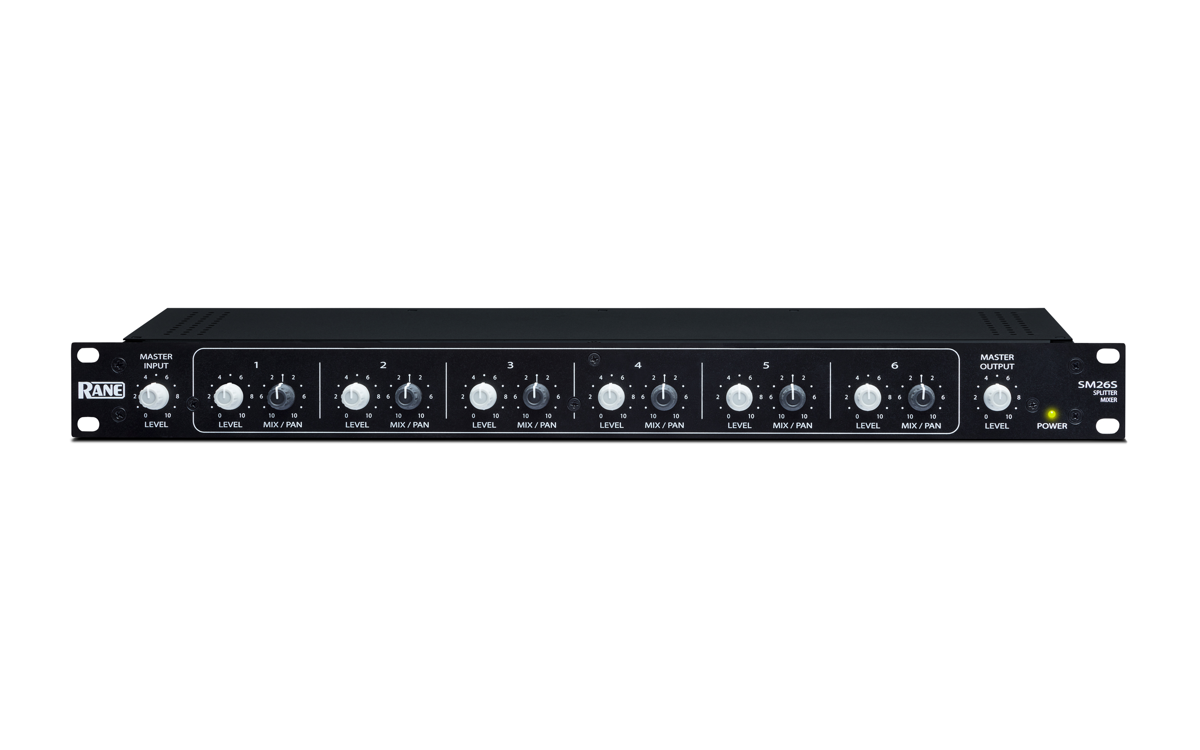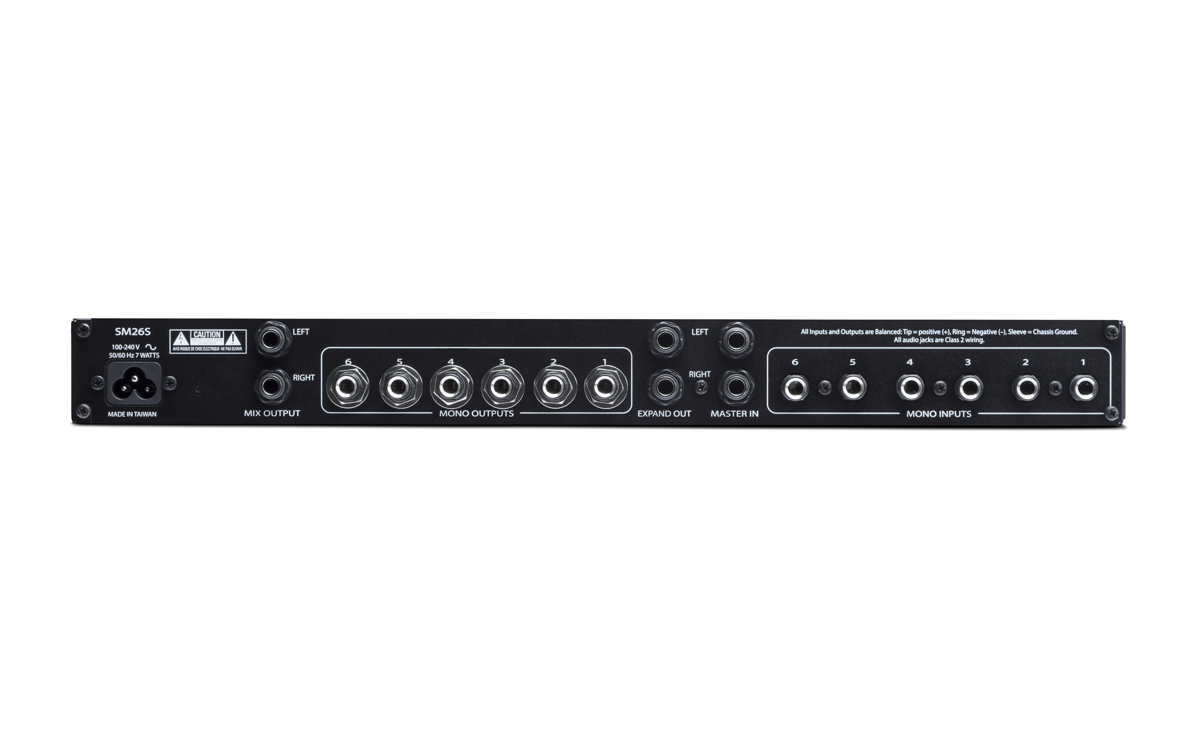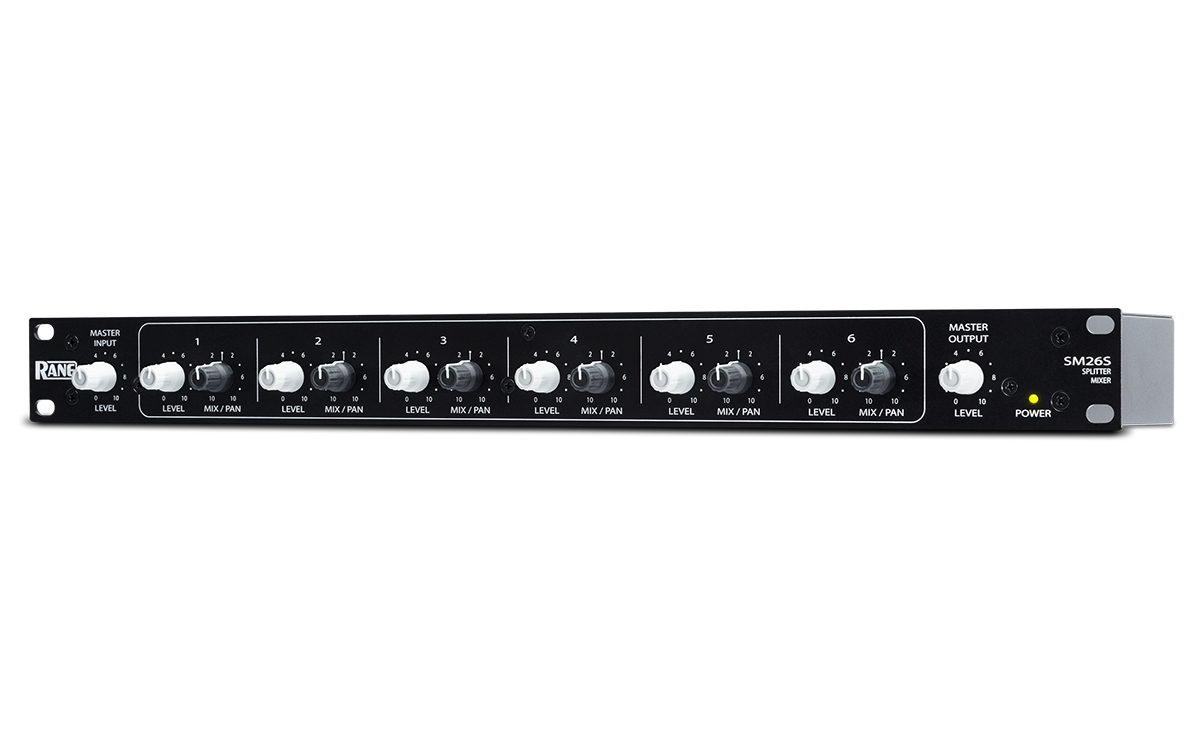
SM26S
6チャンネル・ラインレベルスプリッター/ミキサー
SM26Sは様々な用途で使用されることを想定して精巧に設計された汎用性の高い6チャンネルラインレベルスプリッター・ミキサーです。レベ
ルとパン・コントロールが可能な6系統のバランス、アンバランス・ラインレベルの入力に加え、ステレオマスター入力を使用すると、合計で8系
統の入力が可能です。ミックスした音声は、全体のマスター出力レベルコントロールに送られ、リアの左右出力に送られます。
スプリッターモー
ドでのSM26Sは、1ライン、または2ラインのレベルレベル入力を受け取り、リアの6系統のモノ出力のいずれかにスプリットすることができます。
このモードのミックス/パンコントロールは、2系統の入力バスのそれぞれからのレベルを各出力に適用するように調整します。内部ヘッダーブロ
ックにより、ミックス出力が独立したステレオ出力になり、合計で8系統の出力が可能になります。
SM26Sは、同時に複数のモードを組み合わせて使用することも可能です。例えば、入力1~3は、左/右の出力バスに混在させることができ、最 初に左右のマスター入力に加えられた信号を出力し、同時に出力6が入力6のストレートスルーモードで使用することもできます。SM26Sのす べての入力と出力は、1/4インチ TRSアクティブバランスです。
<アプリケーション例>
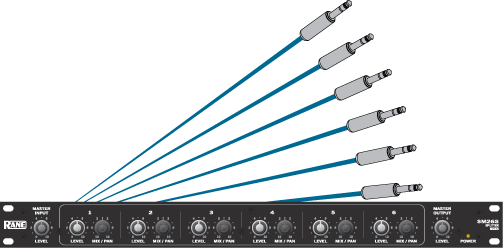
「Swiss Army Mixer」とも呼ばれるSM26Sは、幅広いラインレベルの信号ルーティングの問題を解決するためのさまざまな機能を提供する、非常に用途の広いシングルラックスペースのツールです。ラインミキシング、ラインディストリビューション、ラインマッチング/増幅など、ニーズに応じて、SM26Sはこれらのタスクを簡単に実行することができます。
SM26Sは、ライブレコーディング、-10〜+ 4 dBmレベルマッチング、インターカムシステム、ラインブースト、ホテルおよびクラブゾーン管理、レストランのページングシステム、スタジオまたはステージ用の追加モニターバスの追加など、さまざまなシチュエーションに最適で、より多くのカスタムアプリケーションを使用できます。
- • バランス・モノ入力 x6、バランスモノ出力 x6
- • メイン・バランス入力 x2、メインバランス出力x2
- • ミックス/パンコントロール x 6
- • 入力レベルコントロール x 6
- • マスター入力と出力レベル・コントロール
- • 10 dBV ~ +4 dBu シフター
- • +4 dBu ~ –10 dBV シフター
SM26Sはライブレコーディング、インターカム、ホテルやクラブなどのサウンドシステムコントロール、
レストランのページングシステムなど様々な用途や環境に対応可能です。
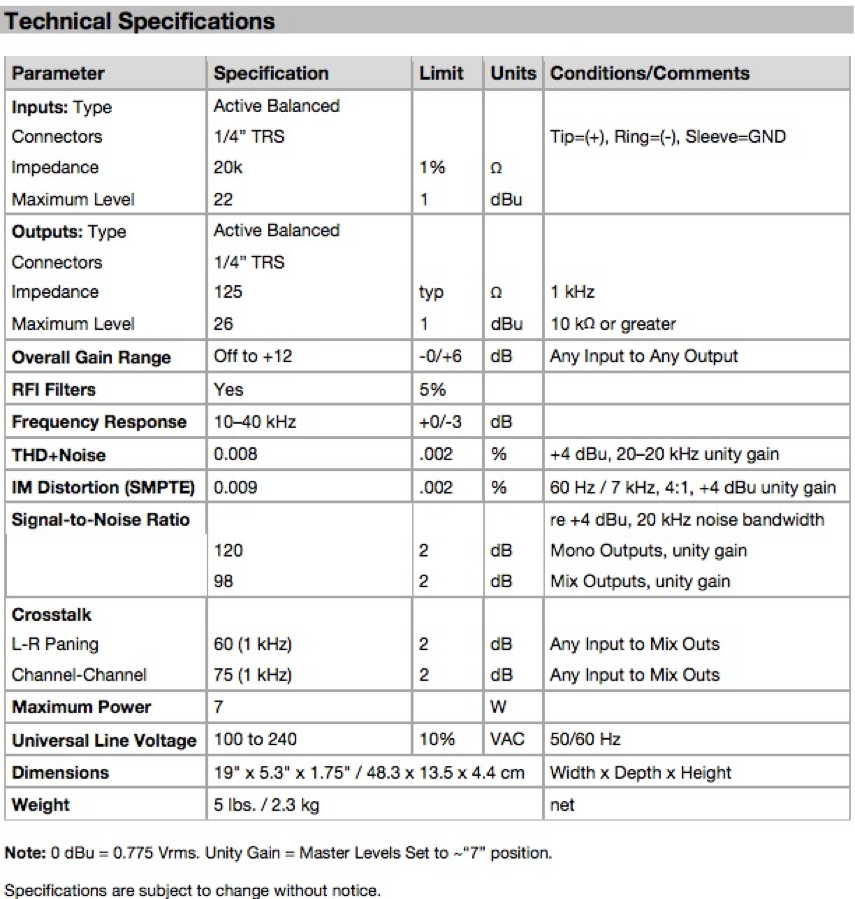
<ブロックダイアグラム>
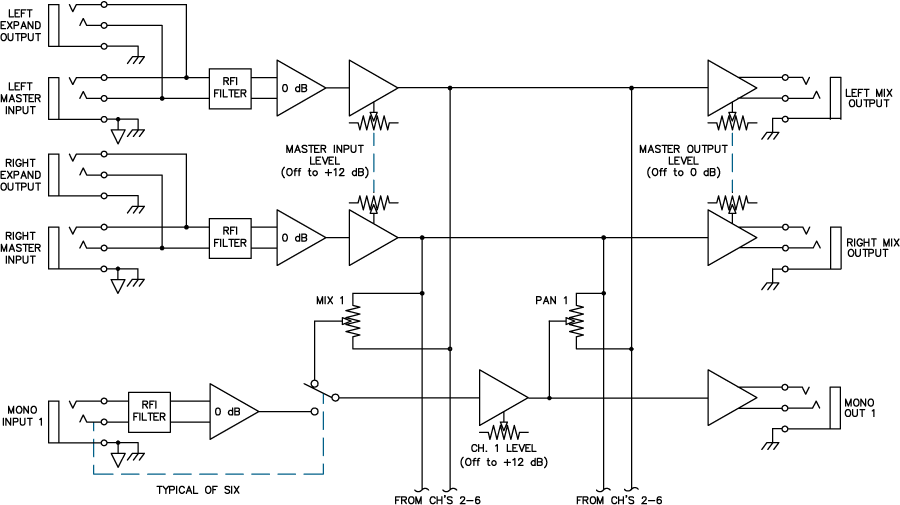
- 6 In, 2 Out Mixer
- 2 In, 6 Out Splitter
- 6 In, 6 Out Buffer Amplifier
- 4 Channel Stereo Splitter
- Other Applications
Introduction
Everyone needs a line level mixer. Even my mother. It has to be small, and cheap, and versatile. It has to be able to mix split, distribute, level match, amplify, attenuate and pan -- all without adding any distortion or noise whatsoever. The mind reels...
And recovers, and discovers the Rane SM26S Splitter Mixer. It is small (1 rack space), extremely versatile, and affordable. It is a 6 in/2 out mixer, a 2 in/6 out splitter/distribution amplifier, and a 6 in/6 out buffer amplifier. It has 12 dB of gain and better than 80 dB of attenuation. The distortion products are less than .009% and the noise floor is a trifle 35 microvolts.
Inside this RaneNote is found a gruelingly complete description of the innards of an SM26S and a pathetically skimpy introduction to the many possible applications of same. Such is my belief that you are the best judge of how to apply the SM26S once you really understand its workings.
Block Diagram

Figure 1. SM26S Complete Block Diagram
A complete block diagram of the SM26S appears as Figure 1. (Get your eyeglasses, you may need them.) Stereo input pairs are accommodated by the individual LEFT and RIGHT INPUT jacks. Expansion or "daisy chaining" is possible through the use of the parallel EXPAND OUT jacks. A dual-ganged MASTER INPUT LEVEL control sets the gain from off to +12 dB for both Inputs.
From here, the Master Inputs feed a left and right mixing bus to each of the six MIX pots, as well as going straight through to the MASTER OUTPUT LEVEL control which feeds the Left and Right MIX OUTPUTS. The Output from each of the MIX pots feeds the individual Mono Channel Level controls through a switching contact associated with the MONO IN jacks. (The jacks are drawn in their open, i.e., unused state. Inserting a plug into the MONO IN jack causes the auxiliary switch to change position.) The combined left and right signals go to each of the channel Outputs.
Individual mono inputs enter through the MONO IN jacks, through the (now closed) auxiliary switch to the +12 dB gain stage where it feeds the MONO OUT jack. The PAN pot splits the signal into two signals that feed the LEFT and RIGHT MIX OUTPUTs via the Master Outputs.
It's really quite simple. Now let's look at specific configurations, leaving out the unused circuitry.
6+ In/2 Out Mixer
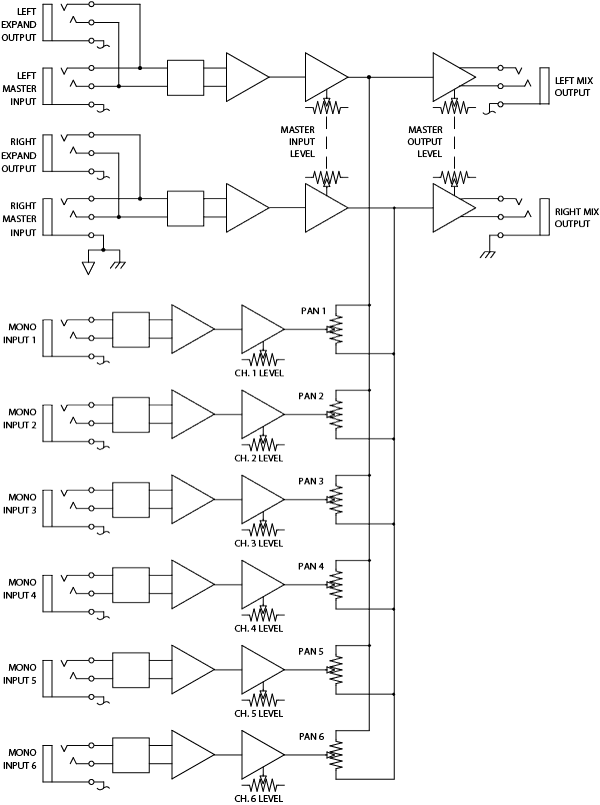
Figure 2. 6+ In/2 Out Mixer Configuration
Figure 2 diagrams the SM26S signal path when configured as a 6+ In/2 Out Mixer. The individual Inputs are connected to each of the six MONO IN jacks and the combined Outputs are taken from the Left and Right MIX OUTPUT jacks. The "plus" comes from the fact that the LEFT and RIGHT INPUTS also connect to the Left and Right MIX OUTPUTS. There is no pan capability on these two Inputs, but each of them does sum with the 6 MONO INs to produce a 6-plus-Left to the Left Output and a 6-plus-Right to the Right Output option if so desired.
2 In/6+ Out Splitter/Distribution Amplifier
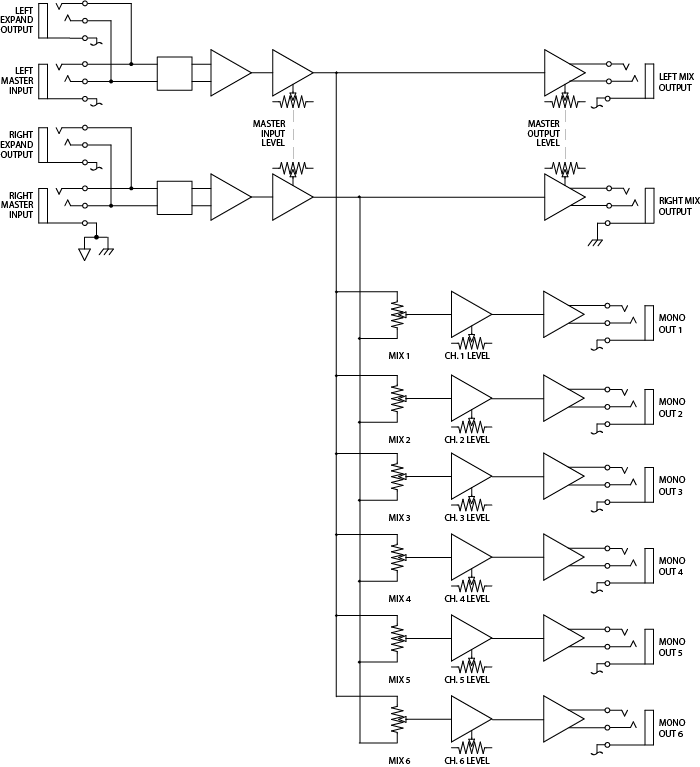
Figure 3. 2 In/6+ Out Splitter/Distribution Amp
Figure 3 shows how the SM26S can be used in the exact opposite mode as described above. When wired per Figure 3, the SM26S becomes a 2 In/6+ Out Splitter/Distribution Amp. The master stereo signal is connected to the Left and Right INPUT jacks and is summed via the six Mix pots to each of the MONO OUTS. The "plus" is that the stereo bus is also coupled directly through to the Left and Right MIX OUTPUTS. This allows signal translation from 10 dBV to +4 dBm or other level related conditioning to the master stereo bus before feeding other equipment.
6 In/6 Out Buffer Amplifier

Figure 4. 6 In/6 Out Buffer Amplifier
Figure 4 shows how the SM26S can be used as a "straight through" line buffer amplifier. Inputs are brought into the Mono In jacks and exit from the Mono Out jacks. Each channel has a separate +12 dB gain stage with Level control.
NOTE: One additional channel can be gained by rotating all the PAN pots fully CW and using the LEFT INPUT and LEFT MIX OUTPUT (or rotate tully CCW and use the RIGHT IN and OUT combination).
Expansion
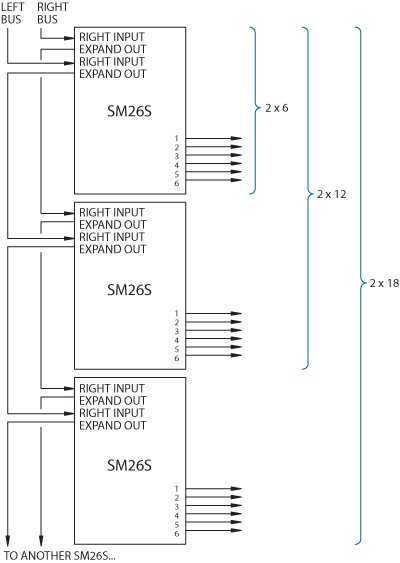
Figure 5. Splitter Expansion
Expanding the input and output capacity of the SM26S Splitter Mixer is quite easy. Figure 5 shows the procedure for splitter mode expansion. The Left and Right Input buses are "daisy chained" using the expand out jacks as shown, and the Outputs are taken directly from each SM26S's MONO OUTS.

Figure 6. Mixer Expansion
Mixer expansion is the reverse procedure and appears as Figure 6. Inputs are brought into each of the SM26S's while their respective Left and Right Mix Outputs are used to cascade the chain by connecting to the Left and Right Inputs of the next SM26S, and so on.
Applications
The SM26S is unusually versatile in its applications. With the capability to mix 6 Mono Inputs down to one stereo pair, or split one stereo pair into 6 separate Outputs. or condition 6 Inputs by adding gain or attenuation -- all of this either balanced or unbalanced and able to drive 600 ohm lines, makes the SM26S truly a "Swiss Army Mixer". Further, any combination of the above can occur at the same time, in the same unit.
1 In/3 Out + 3 In/3 Out Combination
For instance. you can split one signal into three separate Outputs with individual LEVEL controls and use the remaining three MONO INS and OUTS as buffer/line driving amps. creating a 1 to 3 / 3 to 3 combination.
6 In/6+2 Out
Another interesting combination is to use the SM26S as a 6 In/6 Out level translation amplifier (infinite cut to +12 dB boost) and also mix the 6 Mono Inputs down to one stereo pair with the PAN pots. The stereo Output appears at the Left and Right MIX OUTPUT jacks.
6+2 In/2 Out
Or bring 6 Mono and 1 Stereo pair into the SM26S and add the 6 MONO INs to the stereo pair via the PAN pots. You now have a 6+2 In/2 Out situation with the 6 Mono Inputs still available as 6 buffered Outputs if needed.
Zone Amplifier Level Controls
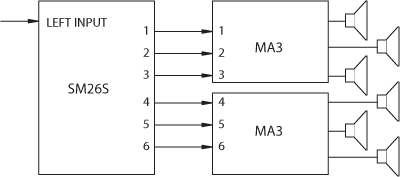
Figure 7. Level Controls for MA 3 Amplifiers
Adding individual remote level controls to the MA3 Multichannel Amplifier is easy with the SM26S as diagrammed in Figure 7. The mono signal is applied to the Left input jack and the 6 balanced mono outs are connected to the balanced inputs of the MA 3s. Rotating all Mix pots fully CCW routes the Input signal to each of the mono outs. Each individual Output is adjusted by the respective Level control for that channel.
If separate sources are connected to the LEFT and RIGHT INPUT jacks then the individual MIX pots will determine which source (or combination of both) is presented to each of the MONO OUTS. Full CCW rotation gives Left only; full CW rotation gives Right only; and the middle position gives equal amounts of Left plus Right.
Stereo Headphone Mixer
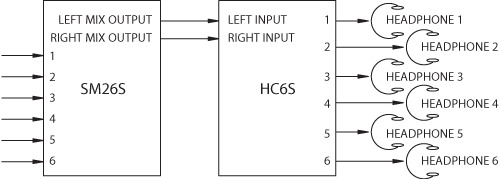
Figure 8. Stereo Headphone Mixer
Figure 8 shows how the SM26S can be used as a 6 In/2 Out stereo mixer driving the HC6S Headphone Console. Six Mono Inputs are brought into the SM26S where they are mixed together via the PAN pots to create a stereo output signal at the Left and Right MIX OUTPUT jacks. These lines are connected to the MASTER LEFT and RIGHT INPUT jacks of the HC 6 where they drive the six stereo headphone amplifiers.
6-to-1-to-6 Mixer Splitter

Figure 9. Mixer Splitter
Figure 9 shows how to use two SM26S's to create a 6-to-1 mix then a 1-to-6 splitter, to drive six amplifier channels. In just 6 rack spaces, this configuration creates a complete 6 channel mixer zone amplifier system.
The controls of the first SM26S are used to condition and mix the six Mono Input signals while the controls of the second SM26S are used to set the individual Levels of the six amplifiers.
4-Channel Stereo Splitter
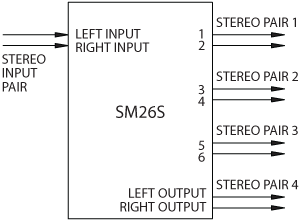
Figure 10a. Four Channel Stereo Splitter
Don't get into the mind trap of thinking of the SM26S as only a mono splitter mixer. It can function equally well as a stereo splitter mixer. Figure 10 shows how to configure the SM26S as a 4-channel stereo splitter (also known as a distribution amplifier). The stereo Input pair is brought into the LEFT and RIGHT INPUTS and then routed via the MIX pots to all of the Outputs. By setting Channels 1, 3 and 5 for full LEFT mix and channels 2, 4 and 6 for full RIGHT mix, you split the incoming signal into 3 stereo output pairs available from OUTS 1 & 2, 3 & 4, and 5 & 6 respectively. The 4th stereo Output pair is taken from the Left and Right MIX OUTPUTS as shown. (Note: use of the 4th independent stereo output requires an internal jumper modification.)
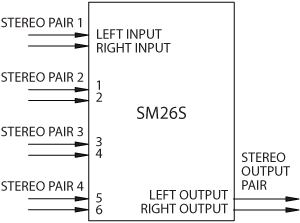
Figure 10b. Four Channel Stereo Mixer
Stereo mixing is done in the exact opposite manner. Up to 4 stereo pairs are brought into all Inputs by connecting one pair to the LEFT and RIGHT INPUT jacks and the three remaining "lefts" to Channels 1, 3 and 5, and the "rights" to Channels 2, 4 and 6. Now by rotating all odd PAN pots fully CCW(Left) and all even PANs fully CW(Right), you have mixed all 4 pairs down to 1 master pair available at the Left and Right MIX OUTPUTs.
Guitar Racks

Figure 11. Guitar Effects Mixer
Figures 11-13 show three possible ways to connect a guitar amp to multiple effects. Figure 11 involves buying or building a cable that parallels all of the inputs of the effects so one loop output drives them all. This works and should cause no great difficulty if the output impedance of the amplifier loop is low. Outputs of 1k ohms or less should be able to drive as many effects devices as you would ever want. A second amplifier could be used from the other Mix Output of the SM26S for stereo.
Many effects have mono inputs and stereo outputs. In this case, connect the left and right outputs of Effect 1 to MONO IN channels 1 and 2 of the SM26S respectively. Rotate the MIX/PAN control of Channel 1 all the way to the Left and the MIX/PAN of Channel 2 all the way to the Right. This preserves the mix of the effects' stereo output and passes it to the Left & Right MIX OUTPUTs of the SM26S. Continue with Channels 3 & 4 for the second effect and Channels 5 & 6 for the last effect. Set the Channel LEVEL pairs to the same levels to preserve the intended mix of the stereo effect.

Figure 12. Ultimate Guitar Effects Splitter/Mixer
The best way, shown in figure 12, uses one SM26S as a splitter to actively split the signal into as many as six separate feeds (or three stereo) for the effects inputs. A second SM26S mixes all of the effects outputs back together for a stereo system.
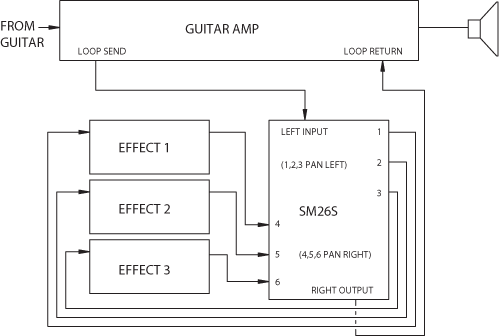
Figure 13. Mono Guitar Effects Splitter/Mixer
Now here's a way to split and mix with one SM26S, shown in Figure 13. From the loop output going to the LEFT INPUT, Channels 1,2 and 3 will act as the splitter, with their pan controls all the way to the left bus. Since the MONO IN jacks know that an individual Input overrides the master Input -- Channels 4,5 and 6 will act as the mixer, with their pan controls all the way to the right. The RIGHT MIX OUTPUT returns signal to the amplifier. Cool!
DJ Effects Mixer
DJ mixers have stereo sends and returns, but it's just as easy to use the SM26S to combine 3 stereo effects. The concept is the same as the Guitar Rack in Figure 11, but in stereo.
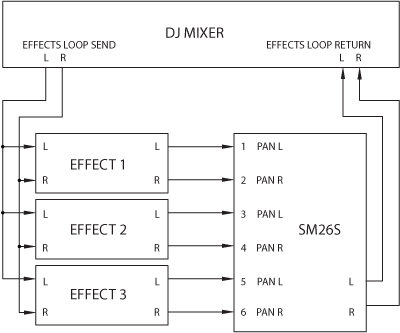
Figure 14. DJ Effects Mixer
And More...
The range of applications of the SM26S Splitter Mixer is staggering and have been barely touched in this Note. From simple sub-mixing to complex split-mix combinations, to individual equipment signal conditioning, to line splitting, to your unique application, the list of uses for the SM26S goes on and on.
Experiment and have fun!
Oh, yes. What does my mother need with a line level mixer? She uses it to mix down her drum kit.
![]() "The SM26S Swiss Army Mixer" This note as PDF.
"The SM26S Swiss Army Mixer" This note as PDF.
- SM26S本体
- 電源ケーブル
- ユーザーガイド
